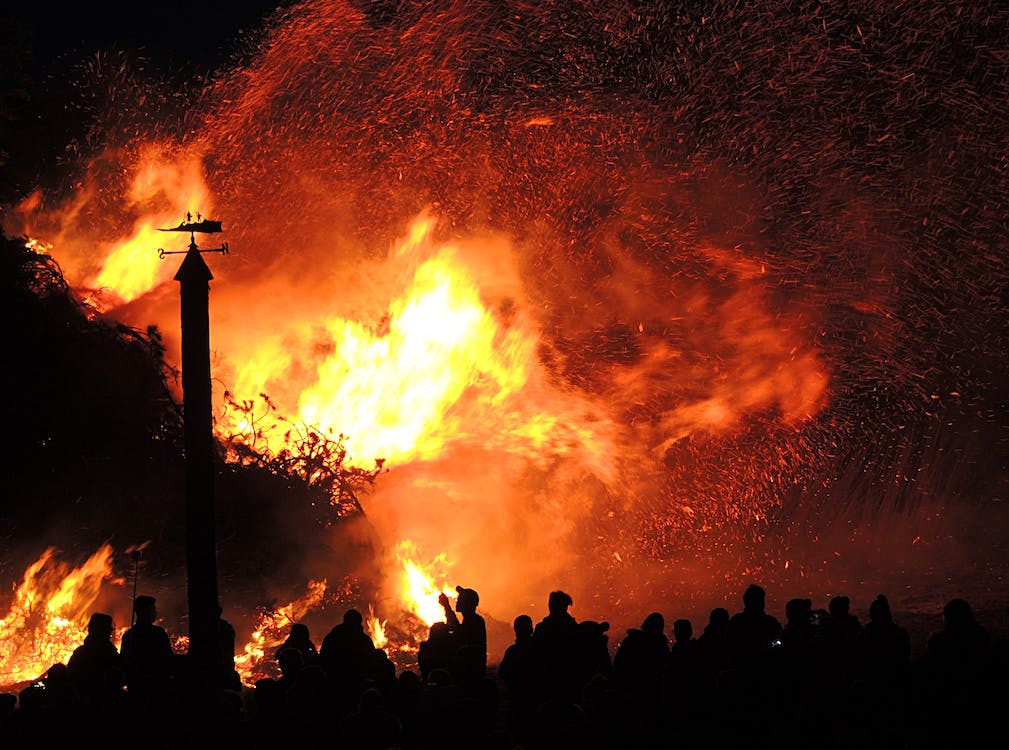More and more people want to get closer to nature, that’s why they build houses in woodland settings — in or near forests, remote mountain sites, and rural areas. Homeowners enjoy the beauty of nature in these areas but they will face the probable dangers of wildfires.
Major wildfires occur every year across the United States. Some homes survive the wildfires, while others do not. Some homes in wildfire-prone areas survive because homeowners have the knowledge on how to protect their homes against wildfires, which is indeed an unavoidable force of nature. Since people in these areas always anticipate the possibility of wildfires, they would come prepared for them.
You may not even notice that a wildfire has already started. These wildfires are usually triggered by lightning or accidents. Then these wildfires spread fast quickly, fanning out to bushes, shrubs, trees, at an unrelenting and alarming rate. That’s where the phrase “to spread like wildfire” comes from.
To minimize risking yourself, your family and your homes from wildfires, prepare as soon as possible. Call a meeting with a family and discuss what actions you should and what places you should go when wildfire strikes in your area. Here are ways on how to prepare yourself for wildfires.
Before a wildfire fire season approaches:
1. Create a disaster plan for your family and make a disaster emergency kit.
2. Prepare your family for the emergency evacuation
3. Prepare an emergency plan for your pets
4. Re-design and landscape your property with the fire safety in mind. For instance, choose plants that have the ability to curb fire, rather than fuel it. If you have to put up fences around your home, choose fencing materials that can contain the fire, or treat fences with intumescent paints or any fire-retardant coatings.
5. Clean roofs and gutters regularly
6. Make sure that the path or roads leading to your property are clearly marked and wide enough, or that your house is visible from the roadside. Having access to your property will facilitate firefighters in bringing along their equipment (such as a hose and a ladder) whenever wildfire hits your home.
7. Inspect chimneys at least twice a year, and clean them at least once a year. Maintain dampers in good working condition. Set up a spark arrester in your chimneys and stovepipes. Make sure that the spark arrester should meet the requirements of the National Fire Protection Association Standard 211.
8. Install smoke alarms, especially around bedrooms. Buy dual-sensor smoke alarms. Do a test on these smoke alarms monthly and change the batteries at least once a year.
9. Give each family member instructions on how to correctly use the fire extinguisher and where it’s properly kept.
10. Keep household items — a rake, ax, handsaw or chainsaw, a shovel, a bucket, etc. — within proper reach. These items can be used to fend off flames.
11. Keep a tall ladder — especially the one that reaches the roof.
12. Get rid of items that will easily catch firewood piles, lawn furniture, tarp covering, BBQ grills, etc.
13. Maintain and outside water source near you such as a swimming pool, cistern, tank, a hydrant, a well, etc. It’s better if you have a natural water source nearby such as a small pond, a lake or a river — you will have more than enough to help the firefighters in putting out a fire in your home.
14. Have a garden hose that is long enough to reach areas inside your house or other structures near your property.
15. Install at water outlets on at least two sides of the house, and near other structures of the property. You should install outlets at least 50 feet from your house. Make sure that these outlets should be resistant to frost as well.
16. Get a portable gasoline-powered pump in case electrical power is suddenly disconnected
If a wildfire is near:
1. If a wildfire approaches your area, don’t assume that someone else has called. When the wildfire is near you, report it immediately.
2. Evacuate family members and pets who will never be needed in preparing a home. Evacuate children, the elderly and the invalid immediately.
3. Put on protective clothing such as a sturdy pair of shoes, long pants and a long-sleeved shirt (preferably made of cotton or wool), gloves, handkerchief or face mask to protect your face and nose.
4. Remove curtains and drapes that will catch fire. Close outside attic, doors, windows, basement vents, pet doors, etc., as well as blinds and non-combustible window coverings to minimize heat. Also, close doors inside the house to keep out a draft.
5. Close the fireplace screen, but keep the dampers open.
6. Shut off the gas source in your home — be it of natural gas, or propane, etc.
7. Place the ladder against the house in a virtually smokeless view.
8. Store important papers and documents, mementos, etc. inside your car in the garage, and be ready to flee quickly and immediately.
9. If you have a pet with you, also put it into your car.
10. Close all garage doors.
11. Turn on the lights inside to make your house visible under thick smoke.
12. Leave the doors and windows closed but unlocked to enable firefighters to have quick access in putting out fires.
13. Move furniture away from beside the windows and doors into the center of the house.
